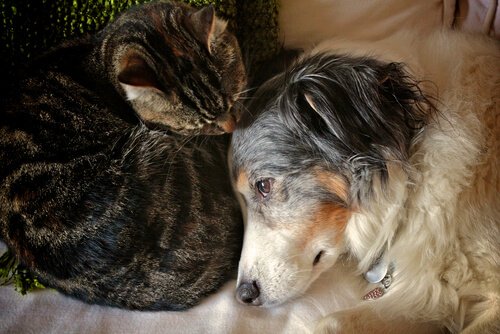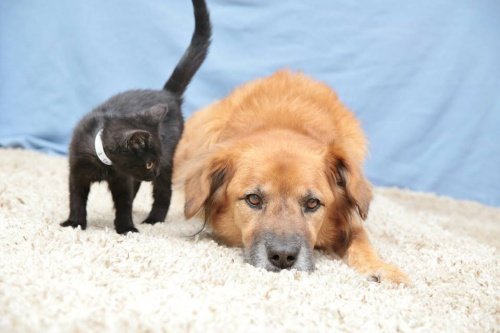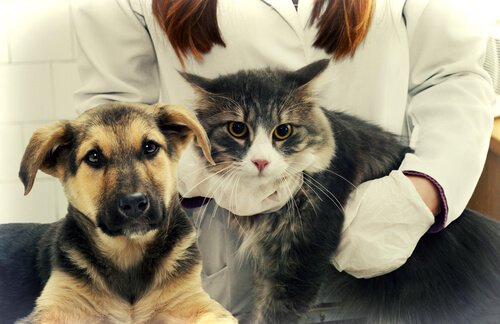3 Steps to Heal Cat or Dog Burns

Pets can get hurt, this includes at home. That’s why it’s important to have a first aid kit for them too. You should also know how to react if your pet ever has an accident or another type of medical emergency. Today, we want to tell you what you should do to treat cat or dog burns.
Most common causes for cat and dog burns
Pets can get several types of burns. The most common ones come from the following:
- Accidentally getting hit with boiling hot water or oil in the kitchen
- Overexposing surgical wounds to the sun.
- Walking on embers at home.
- Electrocution.
- Touching certain chemical products

Source: Arizona Humane Society/ Facebook
Keep in mind that just like humans, domestic feline and canine burns can be classified as first, second, or third degree. This depends on the size and depth of the burn. It goes without saying that the faster you help your pet, the better their chances to have a fast and full recovery are.
It’s important for you to know how to treat domestic animal burns. Providing your pet this with first aid care before taking them to the vet will definitely help them have a better, faster recovery.
Step one for treating a burn: temperature and cleaning
The first step in treating a dog or cat burn is to immediately cool the affected areas and then clean them. What’s the best way to do this?
You need to apply a large amount of cold water to the burned skin. You can use wet clean gauze. Even if you can’t rub the burn, you should very carefully wash it. This will help you remove the dead skin as well as the residue of what caused the burn.
Also, you should by no means use ice. The only thing you’ll end up doing is making the situation worse due to its extremely cold temperature.
Step two: disinfect the burn
After properly cleaning the burn, you need to apply an antibiotic ointment. This will help fight off any infections. This will also give them the hydration their skin needs.
If you don’t have this kind of treatment at home, you can substitute it with a bit of honey. It’s a natural product that has great antiseptic properties.
To make sure the ointment covers the wound properly, you should cut your pet’s fur on and around the affected area.
Step three: bind the wound and go to the vet
Bandage the burn in order to prevent infections caused by mosquitoes or other insects. Be sure to use a clean gauze and lightly cover the affected area. Don’t press it onto your pet’s wound. It’s also wise for you to put a cone collar on your pet to make sure that they don’t remove the bandage or lick their wound.
Once you’ve finished this first aid, it’s time to take your pet to the vet. They will determine the next steps. You should do this even when you don’t think that the wound is severe.
Let the vet evaluate if the area needs to be better disinfected or if more dead skin needs to be removed. They will also decide if you need to use a specific treatment. They might even say that the first aid you gave to your puppy or kitty was enough. In this case, they will tell you how to treat the burn at home until it’s completely healed.
How to evaluate if your pet has a burn

Either way, it’s always better to prevent than to treat a burn. The best thing to do is to keep your pets from suffering accidents — like this one or other kinds – at home. So, it’s a good idea to:
- Keep your pet out of the kitchen when you’re cooking.
- Keep wires out of their reach.
- Make sure your dog or cat doesn’t spend too much time in the sun. This is especially true if they have a wound that’s in the process of healing.
Also, you should take this advice into consideration especially if you have a puppy or kitten.
All cited sources were thoroughly reviewed by our team to ensure their quality, reliability, currency, and validity. The bibliography of this article was considered reliable and of academic or scientific accuracy.
- American Kennel Club. (2015) First Aid for a Dog Burns. Recuperado el 3 de febrero de 2022, disponible en: https://www.akc.org/expert-advice/health/first-aid-for-a-dog-burns/#:~:text=Burns%20should%20be%20treated%20immediately,Obtain%20veterinary%20care%20quickly.
- Becerril, A. (2020) Diseño y desarrollo de protector de heridas en entorno veterinario. (Tesis de grado, Universidad Politécnica de Madrid)